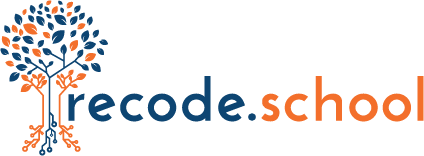In my professional development for educators, particularly school leaders, I always like to ask the question … “when it comes to your school, what is the goal?” It seems such a simple question, but inevitably the school leaders struggle with any response at all. At best, I might get some confusing and usually poorly crafted mission statement. Some daring to respond default to the state line of something like “college and career ready graduates.” Very, very few can confidently articulate the goals of their school, or even of schooling generally, in relationship to the children under their care. I am not entirely sure why this is the case, but certainly the odd and usually slightly annoyed looks the school leaders give me when the question is posed tells me that no one has ever asked them to contemplate it before with the expectation of a clear answer.
STEAM Academy, the school at the center of this book (see the end of the book for more information about it), came into existence largely without a clearly defined goal. There were, of course, some agreeable components such as we should graduate the kids from the high school and, if possible, give them some grounding in the STEM fields with a touch of Arts. There was a vague concept of a model school in Ohio, but no real understanding of how we would achieve anything like that. Of course we were expected to pass state standardized examinations. Everyone was well intentioned and a viable learning environment was created, but beyond the surface everyone had doubts about the goals. With the concept of “high school” so firmly entrenched in all of our collective minds, a massive lingering question of “why was this school trying to deviate” permeated every decision and every day. It lingered over the classrooms like a haze, and every decision each teacher made had to be filtered through it.
So, during our first year, quite a bit of time was spent simply trying to determine the goal. Top level leaders were resigning left and right, so the ultimate decision as to the goal of the school fell to the leadership team within the building. It was a blessing, but we didn’t know it at the time. I think there is a longing, perhaps even on my part, for someone just to simply tell us what to do. And, being honest, there were certainly times when we used the lack of goal-setting by top level leaders as an excuse. Our team was competent so we knew we could achieve whatever anyone wanted from us if only someone were to be kind enough to tell us what that was. It never really came or at least never really held beyond a month or two. Thus, at some point near the end of year one of STEAM, our team in the building just realized it simply wasn’t coming at all. It would, for better or worse, fall to us.
None of our leadership team had ever done anything remotely close to what we were about to embark upon at STEAM. Our top leader, our principal Ms. Tina Stevenson, had been a highly skilled principal for quite a while, but at a middle school and with quite different expectations. The rest of us were new to this entirely. Our parents were new to this. The kids were new to this. The teachers were new to this. There were certainly times, and occasionally there still are, when the challenge was not choosing between competing ideas … it was simply getting any viable ideas to emerge at all. It was a confusing time and it begged for leadership.
Leaders, perhaps, are defined as much by the opportunity as by the talent. Ultimately, we knew as a team we were going to have to lead a process by which the goals of our school were made clear. That was a complex process that I will describe more in a bit, but the first unequivocal step was to set some goals and that we were going to have to lead it ourselves. Once we understood and embraced that as an opportunity and not as a burden, everything changed.
Laws are not goals, goals are not laws.
Now, let me say something about the difference between laws and goals, as I see them too often confused to the detriment of everyone involved. I get to walk into lots of schools and I can usually tell within the first couple minutes whether a school is driven by laws or driven by goals. While it might be a subtle mental difference
In a democracy, at least the American democracy, the goals are left to the people. The laws are the minimum operating system upon which to execute those goals (also set by the people through their representatives), but goal of any specific institution are left largely to that institution. This is why we have local boards, local councils, local trustees, locally elected officials and the like. This applies beyond education also (think of a local hospital board), but it applies particularly to education in the United States. So, while a state or federal government might set minimum operating procedures, the goals of any public schooling institution in the United States are left to the local institution itself.









